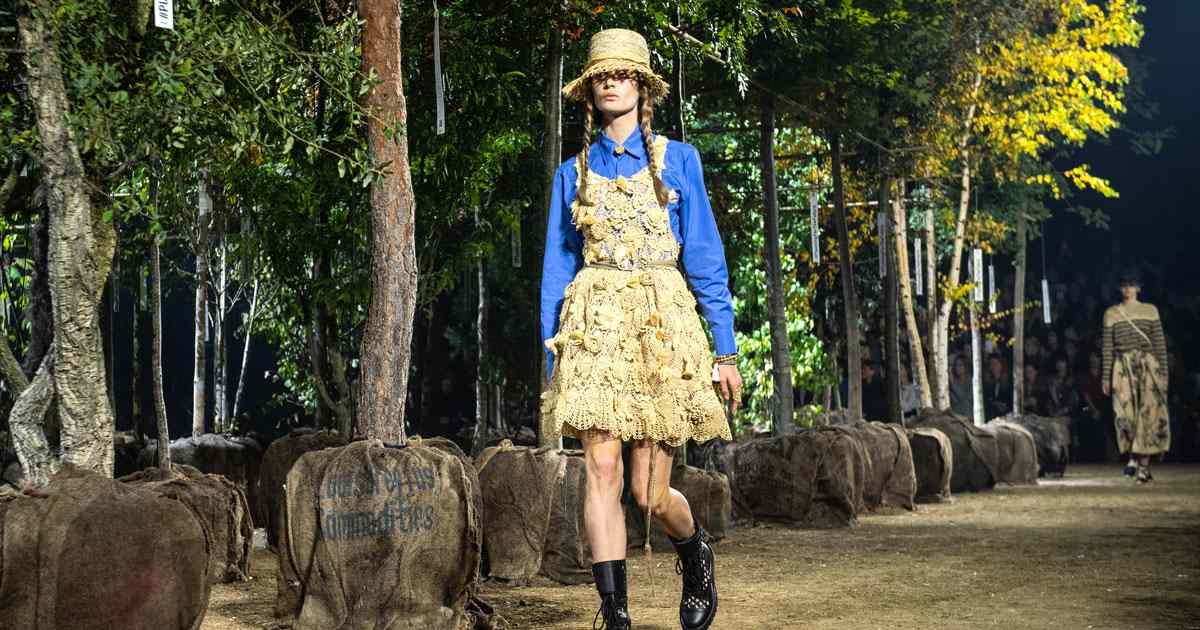
Fashion & ecological commitment: When the catwalks take responsibility
Often singled out as a polluting industry, fashion is responding massively by pursuing its ecological transition. From production to supply to the catwalk, it is now a question of deep commitment, of questioning and of significant change. But, beyond words, how does the textile and luxury industry take responsibility in concrete terms? Zoom in on the different actions linked to this global awareness.
Customized programs and a vision for the future
Faced with repeated scandals and new expectations, fashion must convince and restore some confidence. In July 2019, the Swedish Fashion Council had announced the cancellation of Stockholm Fashion Week. An exemplary act in the face of a format considered outdated: too fast pace, overproduction, overconsumption ... A critical situation for the industry, but which also knew how to be a real incubator of innovation; because fashion knows how to adapt, listen and meet the expectations of its customers. And since the acts must follow it is now done. On August 26, 2019, on the sidelines of the G7 summit, was presented by François-Henri Pinault ( CEO of Kering) the Fashion Pact. A global coalition of fashion and textile companies (luxury, ready-to-wear, lifestyle and sports) as well as suppliers and distributors committed to a common core, focused on three themes: curbing global warming, restoring biodiversity and protecting the oceans.
From Chanel to Salvatore Ferragamo through Prada or Burberry but also by brands such as Inditex or GAP, all have signed this Fashion Pact. LVMH did not want to be part of it because many programs related to the protection and safeguarding of the environment are already in place in their strategy, particularly through the "Life" program. A clear response, a strong commitment and above all strategies for the future for the industry that wishes to show the world that fashion takes its responsibilities and acts.
Wise scenographies for strong messages
And the commitments are global. Because, at the moment, everything is scrutinized and the podiums are no exception. Indeed, a responsible catwalk also means an environmentally friendly design set.

During the Spring-Summer 2020 Fashion Week, Dior innovated by presenting a committed show where the models strolled in a mini ephemeral forest. A bucolic scenography in collaboration with the association "La Réserve des Arts" which aims to replant the 170 trees used on the show in sustainable vegetation projects in the Paris region. And since the devil is in the details: the electricity necessary for the smooth running of the presentation was produced by generators running on rapeseed.
At Louis Vuitton, the trend was also towards awareness, with a Paris spring-summer show where the entire set was donated to the ArtStock association, which recycles and valorizes elements from artistic production in order to preserve the environment. With a refined setting and a set design in wood from sustainably managed forests in France, the revolution seems to be well and truly underway.
A desire for the fashion and luxury industry to change in depth and propose concrete actions for a more conscious and transparent future. Another example of this growing responsibility: the Italian label Prada and its men's fall-winter 2021 digital fashion show. Here, no spectacular decor or extravagance but a minimalist scenography with a sustainable storytelling. Indeed, once dismantled, this set will find a new life in different pop-up of the brand. It will then be recovered by a Milanese association that revalorizes materials and fabric scraps by selling or renting them to students and professionals. As Thibaut de La Rivière, Director of Sup de Luxe, reminds us: "Short cycle and revalorization, brands are asserting their ethical approach by focusing today on wiser decorations and scenographies with stronger messages. Without abandoning creativity or dreams, this is above all a necessary and expected transition." Commitment? The trend not to be missed...